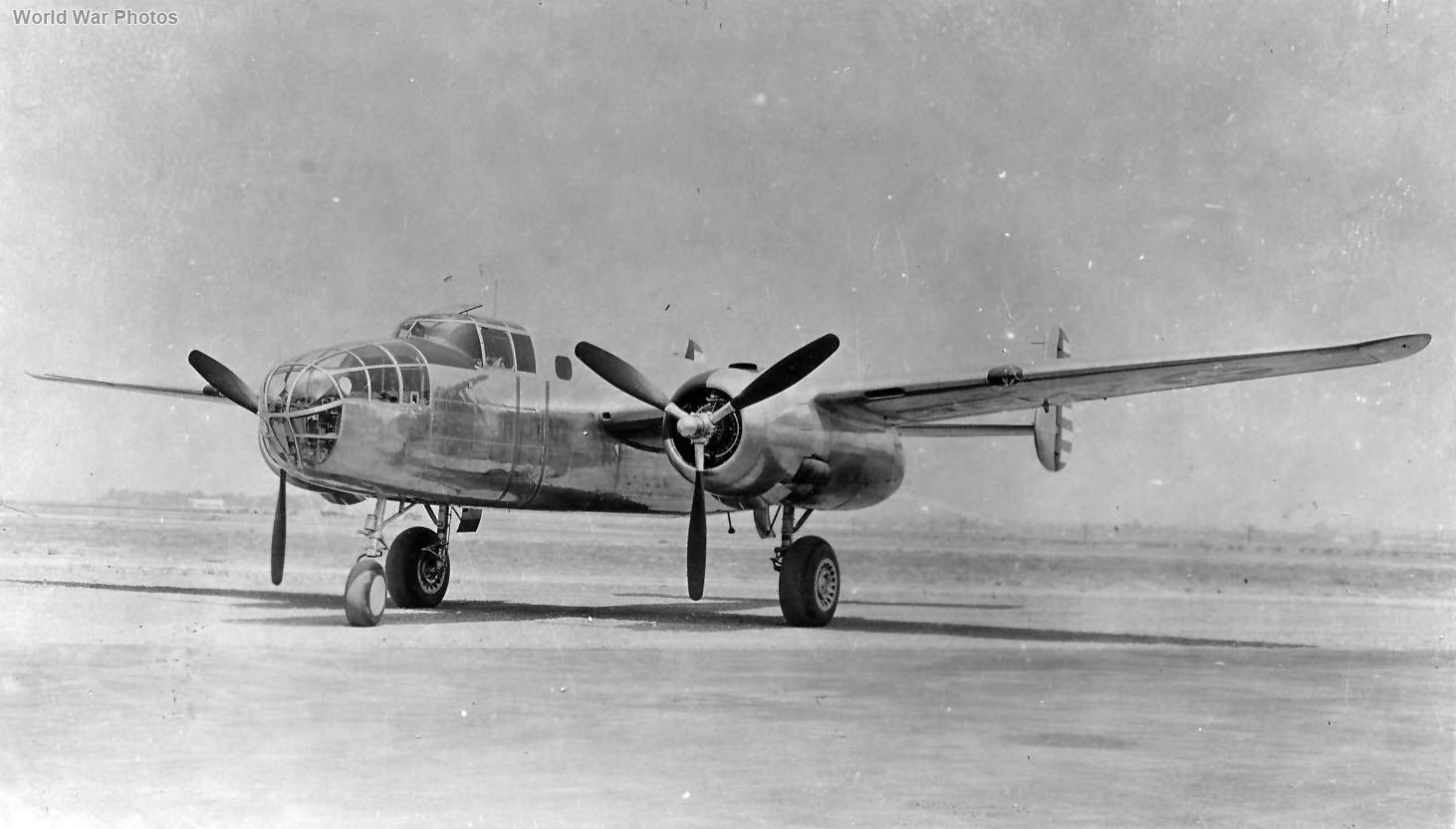A total of 24 Mitchell aircraft were constructed in the initial configuration, with most of them operating as coastal patrol planes across the United States. In this frontal view, the repositioned straight wing, which differed from the NA-40 aircraft, can be seen, along with a wider and more functional fuselage shape.
The initial production variant of the B-25 Mitchell bomber, known simply as the B-25 (no suffix letter) or sometimes referred to as the B-25-NA, marked the beginning of one of the most versatile and widely used medium bombers of World War II. Summary of the key details about this aircraft:
Development and Design:
- Designation: The first twenty-four aircraft were designated as B-25 without any model letter, though they are often referred to as B-25-NA to specify the origin of production at the North American Aviation facility in Inglewood, California.
- Wing Configuration: The first nine aircraft featured a constant dihedral wing from root to tip. However, stability issues led to a design change where the outer wing panels (outboard of the engine nacelles) were given a flat or no-dihedral configuration, resulting in a distinctive gull-wing design that was carried forward in all subsequent B-25 variants.
- Powerplant: Powered by two Wright R-2600-9 Cyclone radial engines, each producing 1,700 horsepower for takeoff and 1,350 horsepower at an altitude of 13,000 feet.
- First Flight: The B-25-NA first flew on August 19, 1940.
Armament:
- Bomb Load: Designed to carry up to 3,600 pounds of bombs in an internal bomb bay.
- Defensive Armament:
- A flexible .30-caliber machine gun in the nose, which could be mounted in one of three positions: front, left, and right.
- Three .30-caliber waist guns for the radio operator, positioned on both sides of the aircraft and one on the top.
- A .50-caliber machine gun mounted in the tail.
Testing and Modifications:
- Flight Evaluation: Some of the initial B-25s were used for flight testing and evaluation, including experimenting with different vertical tail designs to determine the best configuration for production models.
- Standardized Design: By the tenth aircraft, the final design of the B-25 was established, with the wing, horizontal tail, and vertical tail configurations remaining consistent in all subsequent variants.
Performance:
- Maximum Speed: 322 mph at 15,000 feet.
- Rate of Climb: 2,090 feet per minute.
- Ceiling: 30,000 feet.
- Range: A maximum combat range of 2,000 miles with 916 gallons of fuel and a 3,000-pound bomb load (varied depending on fuel and payload).
